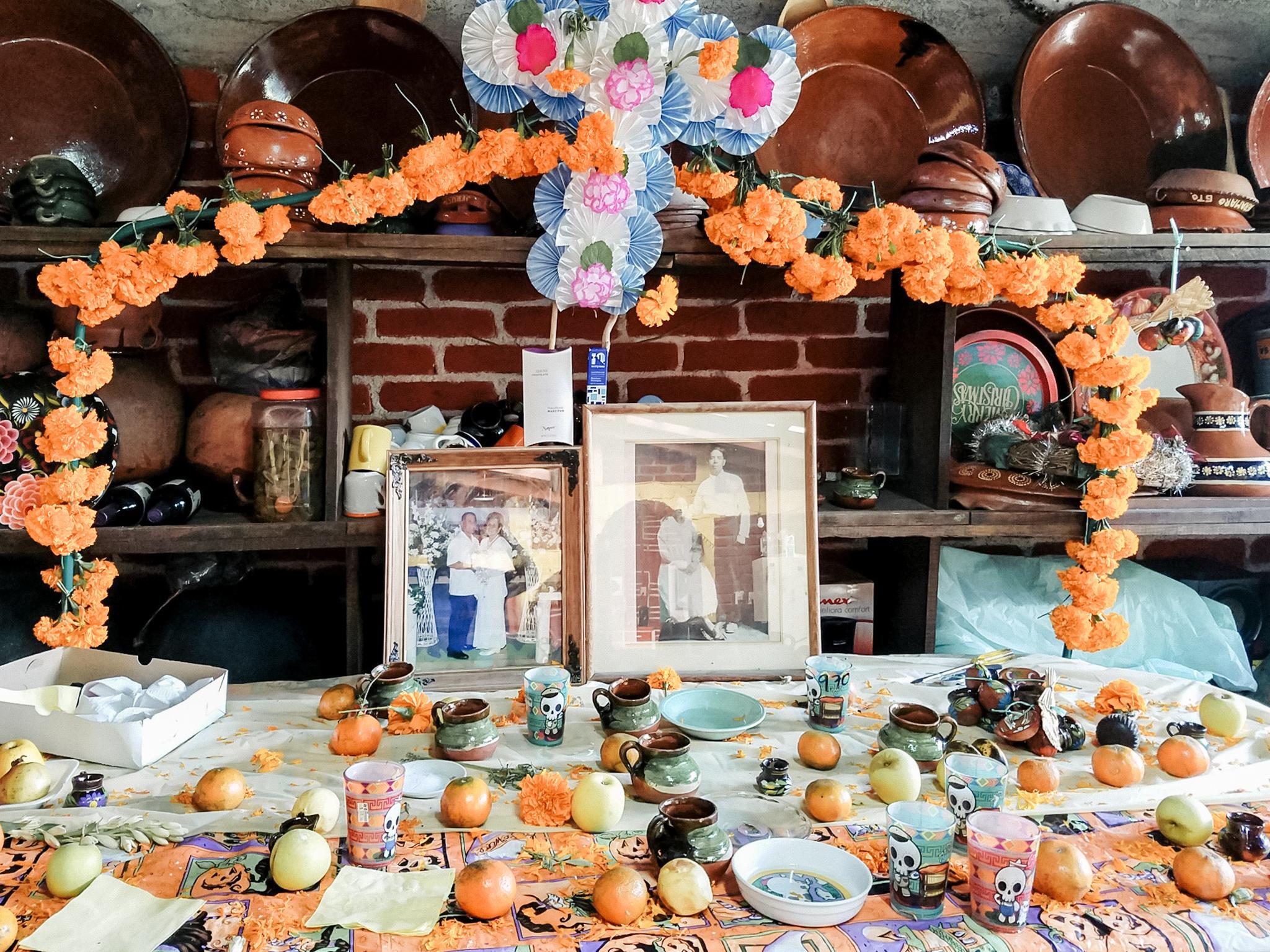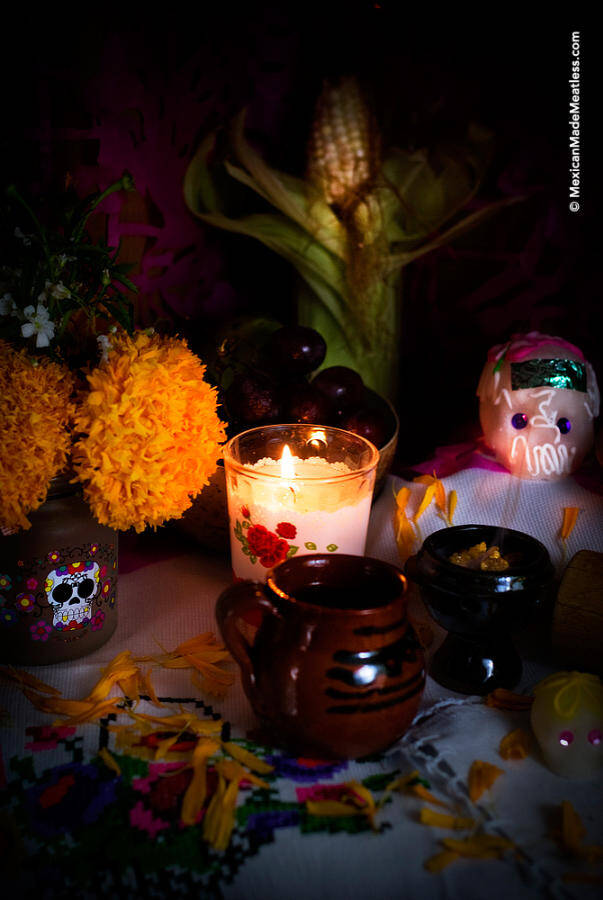



Their orange color is also associated with the feeling of celebrating life, instead of the sadness associated with death. The bright color and strong fragrance are believed to attract spirits to the altar. The cempasúchil, widely known as marigolds, are one of the most recognized flowers associated with the Day of the Dead. The cempasúchil, widely known as marigold flower that is traditionally placed on the altar. Salt is usually laid out in the shape of a cross as a way to purify the souls as they cross over. This is seen as a way to call loved ones to the altar so they can cross over. Photos of deceased loved ones are one of the most vital additions to altars. Photographs of the deceased on the Annenberg Media Center altar. These are some other items that many people place on their altars. This tradition is linked to pre-Hispanic times when people would use these tapetes as a way to guide the spirit from the earthly world of the living to the spiritual world. Using sand and pigment, the sculptures may depict religious themes or other images. Representing the final element, earth, these sand sculptures are an important part of the altar in some Mexican regions. Tapetes de arena (sand sculptures or tapestries) The holes in the paper are a way for souls to travel through to make their visit.Ĥ. The papel picado represents the wind element. These candles are supposed to light the path to guide spirits home.

Representing the fire element, rows of lit candles can be found on altars. Some may also place their loved one’s favorite beverages instead of water. (Photo courtesy of Chelsea Hylton)Ī cup of water will normally be placed on the altar to quench the thirst of the spirits as they make their journey from the afterlife to visit the land of the living. Glass of water representing hydration for spirits "crossing over" during the Día de los Muertos traditions. There are a lot of aspects to these elaborate altars, the most common symbolizing the four main elements: water, fire, earth and wind. One of the most important traditions of this holiday is the preparation of ofrendas (altars) to honor loved ones who have passed away as they make their journey to Earth. It is a holiday mainly celebrated by Mexico and other Latin American countries. Día de los Muertos, or Day of the Dead, takes place on Nov.


 0 kommentar(er)
0 kommentar(er)
